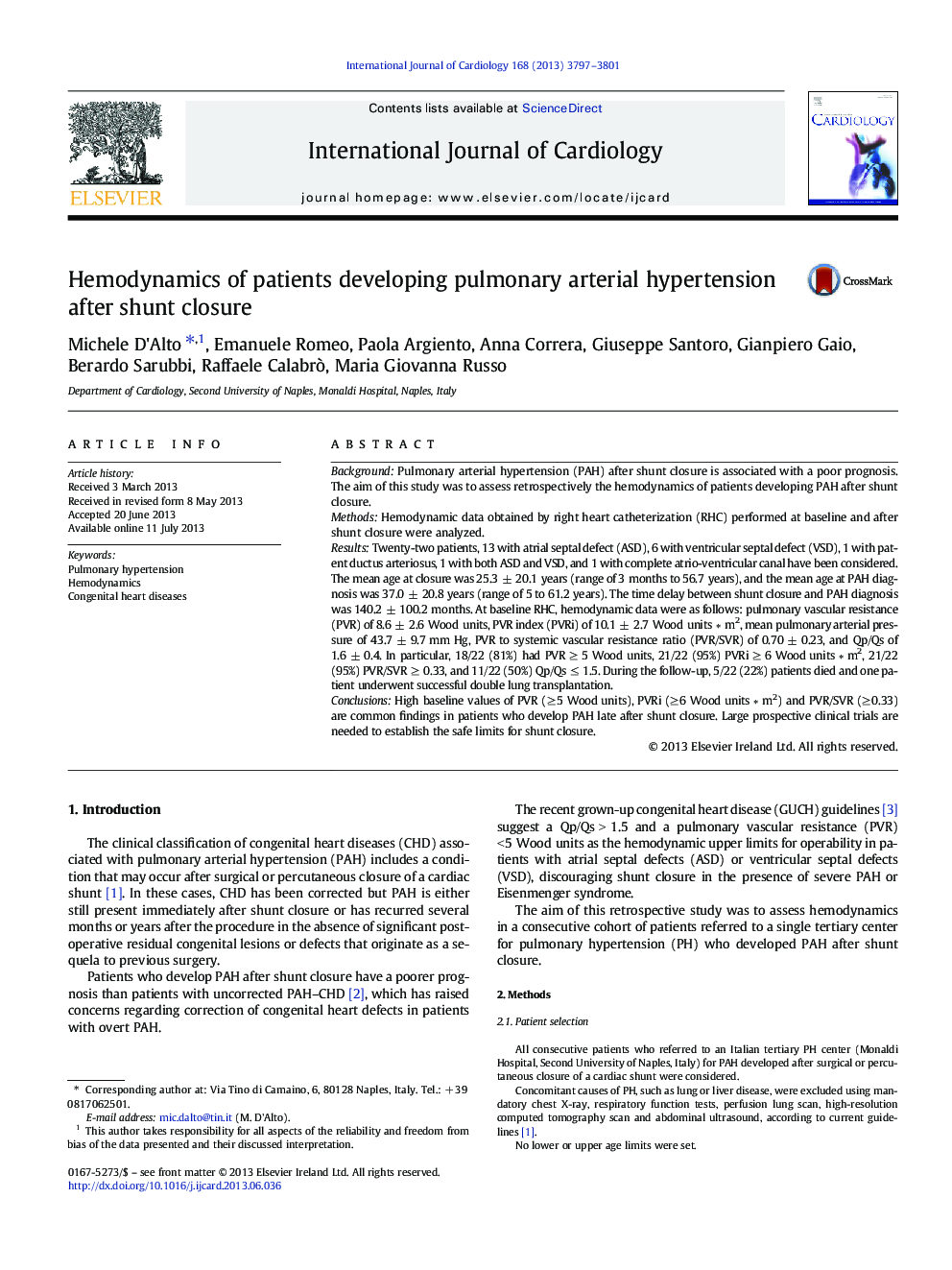| Article ID | Journal | Published Year | Pages | File Type |
|---|---|---|---|---|
| 5973913 | International Journal of Cardiology | 2013 | 5 Pages |
BackgroundPulmonary arterial hypertension (PAH) after shunt closure is associated with a poor prognosis. The aim of this study was to assess retrospectively the hemodynamics of patients developing PAH after shunt closure.MethodsHemodynamic data obtained by right heart catheterization (RHC) performed at baseline and after shunt closure were analyzed.ResultsTwenty-two patients, 13 with atrial septal defect (ASD), 6 with ventricular septal defect (VSD), 1 with patent ductus arteriosus, 1 with both ASD and VSD, and 1 with complete atrio-ventricular canal have been considered. The mean age at closure was 25.3 ± 20.1 years (range of 3 months to 56.7 years), and the mean age at PAH diagnosis was 37.0 ± 20.8 years (range of 5 to 61.2 years). The time delay between shunt closure and PAH diagnosis was 140.2 ± 100.2 months. At baseline RHC, hemodynamic data were as follows: pulmonary vascular resistance (PVR) of 8.6 ± 2.6 Wood units, PVR index (PVRi) of 10.1 ± 2.7 Wood units â m2, mean pulmonary arterial pressure of 43.7 ± 9.7 mm Hg, PVR to systemic vascular resistance ratio (PVR/SVR) of 0.70 ± 0.23, and Qp/Qs of 1.6 ± 0.4. In particular, 18/22 (81%) had PVR â¥Â 5 Wood units, 21/22 (95%) PVRi â¥Â 6 Wood units â m2, 21/22 (95%) PVR/SVR â¥Â 0.33, and 11/22 (50%) Qp/Qs â¤Â 1.5. During the follow-up, 5/22 (22%) patients died and one patient underwent successful double lung transplantation.ConclusionsHigh baseline values of PVR (â¥Â 5 Wood units), PVRi (â¥Â 6 Wood units â m2) and PVR/SVR (â¥Â 0.33) are common findings in patients who develop PAH late after shunt closure. Large prospective clinical trials are needed to establish the safe limits for shunt closure.
